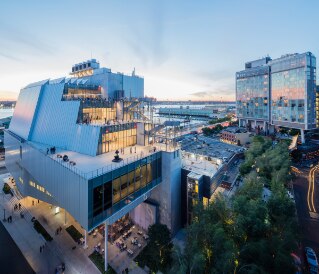“A beetle under a leaf: we can seriously talk of architecture even adopting this language, because if architecture is serious, precise, functional it opens up a discourse on the freedom of images […] The woman to whom this house project is dedicated has kindly agreed for everybody to use it, so as to share her joy with everyone.” With these words published on Domus 414 from May 1964, editor Gio Ponti offered, free of charge, his project for a house whose shape were reminiscent of those of a beetle sitting underneath a leaf.

Collector Giobatta Meneguzzo accepted Ponti's challenge, building a villa equally conceived for his free time and to host his collection. The chosen location, immersed in the woods of Malo, Vicenza, complimented the bucolic spirit that first moved Ponti’s concept.
The Beetle Under the Leaf (1964-68), however, wasn’t complete without the interiors that Meneguzzo commissioned to the then up and coming artist Nanda Vigo, who gravitated around the experience of Group Zero. Vigo had the intuition of covering the entire surface of the building with 20x20cm white Gres ceramic tiles, and then using grey synthetic fur for the furniture – including an elliptic staircase connecting the ground floor with the basement – which occupied a continuous space lacking of any doors.

In 1970, two years from the completion of the house, on the pages of Domus 482 critic Tommaso Trini questioned Vigo on whether her design choices prevaricated the committer’s will by imposing a new approach to domestic life.
The designer proudly noted that “critics and colleagues say: “A bed in the middle of the living room? Unhuman! A house with no doors? That’s crazy! And how about the ceramics and the neon lights? Absurd!" Well, I do find more absurd the works of some of my colleagues who use their job as a sign of good behaviour to impose their pseudo-artistic-consumerist products.”
This very same approach to the project was reproposed a few years later in the interiors for the house-museum of artist and collector Remo Brindisi (1967-71), in Lido di Spina, Ferrara.
.jpg.foto.rmedium.jpg)
Vigo’s interiors, immersive yet alienating, also in virtue of the blinding continuous neon lights and of the trademark "chronotopic" elements, hence became the ideal setting for films that challenged the limits of perception by experimenting with set design, photography and music. On top of the Beetle, other works by Vigo found a role in cinematography (the Yellow House in The Killer Must Kill Again, the Blue House in Gang War in Milan), and are still used these days for visual communication projects, as seen in the spring-summer 2021 campaign by fashion brand Magliano.
However, it was Emilio P. Miraglia’s The Night that Evelyn Came Out of the Grave to frame the iconographic power of the house on the big screen. In the film, a solid giallo with horror nuances and nods to sadomasochistic culture, the tension between gothic atmospheres and contemporary trends is mirrored in the dialogue between unsettling and decadent medieval mansions and modernist and radical design interiors. The set design, just like the costumes, was a work of the brainchild of Lorenzo Baraldi (who also worked on a number of Italian cinema classics like My Friends, Scent of a Woman, The Marquis of Grillo, The Postman).
The contrast between the white plastic of the Brionvega TV set in the dark and opulent interiors of Villa Porto Colleoni in Thiene, Vicenza, is as magnetic and surprising as the deep red blood sprinkling on the bright white tiles of the Beetle Under the Leaf, surrounded by the oversized matches of Raymond Hains’ Seita series, and by a number of exquisite works by the likes of Fontana, Castellani, Bonalumi, Baj, Rotella, Pomodoro, Schifano, and Group Zero among others.
.jpg.foto.rmedium.jpg)
The icing on the cake is Bruno Nicolai’s music, which provides a sophisticated equilibrium of baroque harpsichords, unsettling child-like lullabies, and incursions into psychedelia, all distinguishing traits of Italian horror soundtracks. A genre that was recently object of a retrospective by cult cinematic music label CAM Sugar with its compilation Paura, which also features cuts from the film.
Both the film and the soundtrack hence offer an overlooked perspective on the relationship between Nanda Vigo and the seventh art. The exhibition Nanda Vigo, Incontri Ravvicinati can be visited until November 1st at Fondazione Sozzani, Milan.
.jpg.foto.rmedium.jpg)
Opening image: Nanda Vigo's interiors for the Beetle Under the Leaf in a scene of The Night Evelyn Came Out of the Grave by Emilio P. Miraglia, 1971. Photo: frame from the film.

The Pipe collection, between simplicity and character
The Pipe collection, designed by Busetti Garuti Redaelli for Atmosphera, introduces this year a three-seater sofa.



























